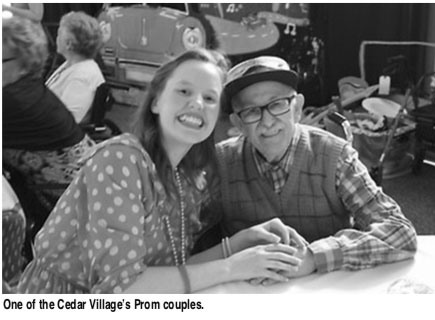The angle of the sunlight changes. The trees shed their leaves in profusion. The call of the shofar punctuates the melancholy of the season. Autumn is here. To some, a gloomy herald of winter to come; to others, a bracing jolt from the torpor of late summer. In Jewish Eastern Europe early Autumn was a time of rain and mud; a time for introspection and soul searching; a time of romantic pining for lost loves. Yiddish poetry is rife with verses about fall in all of its vast array of colors, both physical and emotional.
I’m going to give you a taste of the possibilities for the season’s poetry with a poem by who else but my beloved Leyb Naydus (1890-1918). He wrote many fall-themed or autumnally mooded poems. This one — “Hárbstike Nekht” (Autumn Nights) — was likely composed sometime in the mid-1910’s.
Zitst aléyn af der terráse
In levónedíkn likht;
Vi a hárbstike hadáse
Iz fartróyert dayn gezíkht.
Ástres éynzame farshpréytn
Létste duftn, tsértlekh-dín;
S’dukht: zey némen zikh shoyn greytn
Tsu dem groysn yóm ha-dín.
S’rayst zikh op tsumól a shtern,
Vert farfáln érgets shnel:
Fun a hímlisher tsistérn
Falt a zílber-tropn hel.
Kándelyábres shtéyen lánge.
Kalt un éynzam vi dayn blik
Brent a tróyer-likht a bánge,
Brent tsukópns fun dayn glik.
On a zayt—aléyn farlózn—
Ligt dos úfgemákhte bukh;
Hórkhst-zikh tsu, vi vintn blozn
Un du viklst zikh in tukh.
Héylik-shtil bistú mekáber
Dayn farlóshenem bagér.
Afn bronz fun kándelyábr
Falt a kálte khéylev-trér.
*
On the terrace you are sitting
In the moonlight all alone.
Like a myrtle in the autumn
Your face is gloomy and forlorn.
While the poem is clearly addressed to a woman, the nature of the narrator is unknown. He could be a poet, or a lover. But though an observer of the scene, he is not in it. I will draw your attention to the marked word “terrace,” not a feature of traditional architecture of Jewish Eastern Europe. This is a “culture” word, an indicator of refinement and some degree of wealth. Naydus was one of the most creative innovators of Yiddish vocabulary, importing wholesale all manner of elements of European cultural vocabulary.
The mention of a myrtle in autumn is striking as it is an evergreen bush and not appreciably changed by the seasons. However, the word that Naydus uses is the Hebrew “hadasah” (the variant of the more standard “hadas” that only appears Biblically as a name for Esther in the Book of Esther) instead of the more common “mirt.” The Jewish resonance of the myrtles is as one of the four species used to make a lulav. The festival of Sukkot comes quickly on the heels of the High Holidays, so the “forlornness” of the poem’s addressee is highlighted by the supposed dejection of a plant shortly to have outlived its usefulness.
Solitary asters scatter
Tender final wisps of scent,
Seeming to prepare themselves
For the great Day of Judgment.
Again, “asters” represent a kind of cultivation, both culturally and horticulturally. Perhaps (and only just perhaps) there is an internal resonance between Aster and Esther (via the reference to Hadasah). This is a kind of move I wouldn’t put past Naydus. In any event, this is the season when we see the last of our gardens’ colors fade. The dying asters, releasing the last of their fragrance, are now readying themselves for Yom Kippur (Day of Judgment in the poem is “yom ha-din”). Naydus has now twice associated European high-cultural cues with specifically Jewish referents.
Now and then a star disjoins,
And swiftly from our view withdraws:
From a cistern in the heavens
One bright drop of silver falls.
Lofty candelabra stand.
Lonesome as your gaze and gray
A mourning candle anxious burns,
At the deathbed of your joy.
The falling star has transformed itself into a single drop of fading silver light. That light is the light of one of the mourning candles traditionally placed at the head of the corpse prior to the process of burial. That said, the candle is placed in a tall candelabrum, yet another indicator of wealth, status, and taste.
To the side the book lies open—
All abandoned and forlorn;
Listen to the wind that’s blowing,
Wrap yourself into your shawl.
What book is it that lies open? (Note, it’s “the book” not “a book.”) Naydus leaves it unspecified. Given the images of Yom Kippur and mortality we’ve encountered so far, one could conclude it’s an echo of the Book of Life. Nevertheless, the image of women reading in art and literature is extensive. Here it seems almost de rigueur that an upper class Jewish woman would be a reading subject. She is, however, anything but an open book.
You inter in blessed silence
Quenched remains of your desire.
Upon the candelabrum’s bronze
Falls a chilly tallow tear.
The deathbed image moves to a funereal one. But it is not the burial of a person, but of a desire, a joy, a love lost. Again, the verb is not the unmarked “bagróbn” (bury) but rather the specifically Jewish “mekáber zayn,” indicating a kind of sanctified intimacy. The real kicker comes with the final tear. It is not the mourner who is crying. No. Now it is the candelabrum, the marker of phlegmatic high culture, that sheds its ersatz tear instead of the woman bereft of happiness. That tear — a drop of candle tallow — hardens instantly on the cold bronze of the candelabrum. What has happened? Why has she yielded her emotions to the emotionless objects? Who, or what, was her love? Why was it so intimately tied to Jewish religious themes? The dull splat of candle wax on the cold candelabrum is enough to send a shiver thrilling up your spine. No one matched Naydus for the interplay of registers of Yiddish vocabulary, and the elegiac mood of his autumnal verses are some of the very best in Yiddish poetry.
With that I wish you a “leshóne téyve” (le-shanah tovah). And as always, “léyent gezúnterhéyt” — read it in good health.
Please send Yiddish questions to: yiddishcolumn@americanisraelite.com





